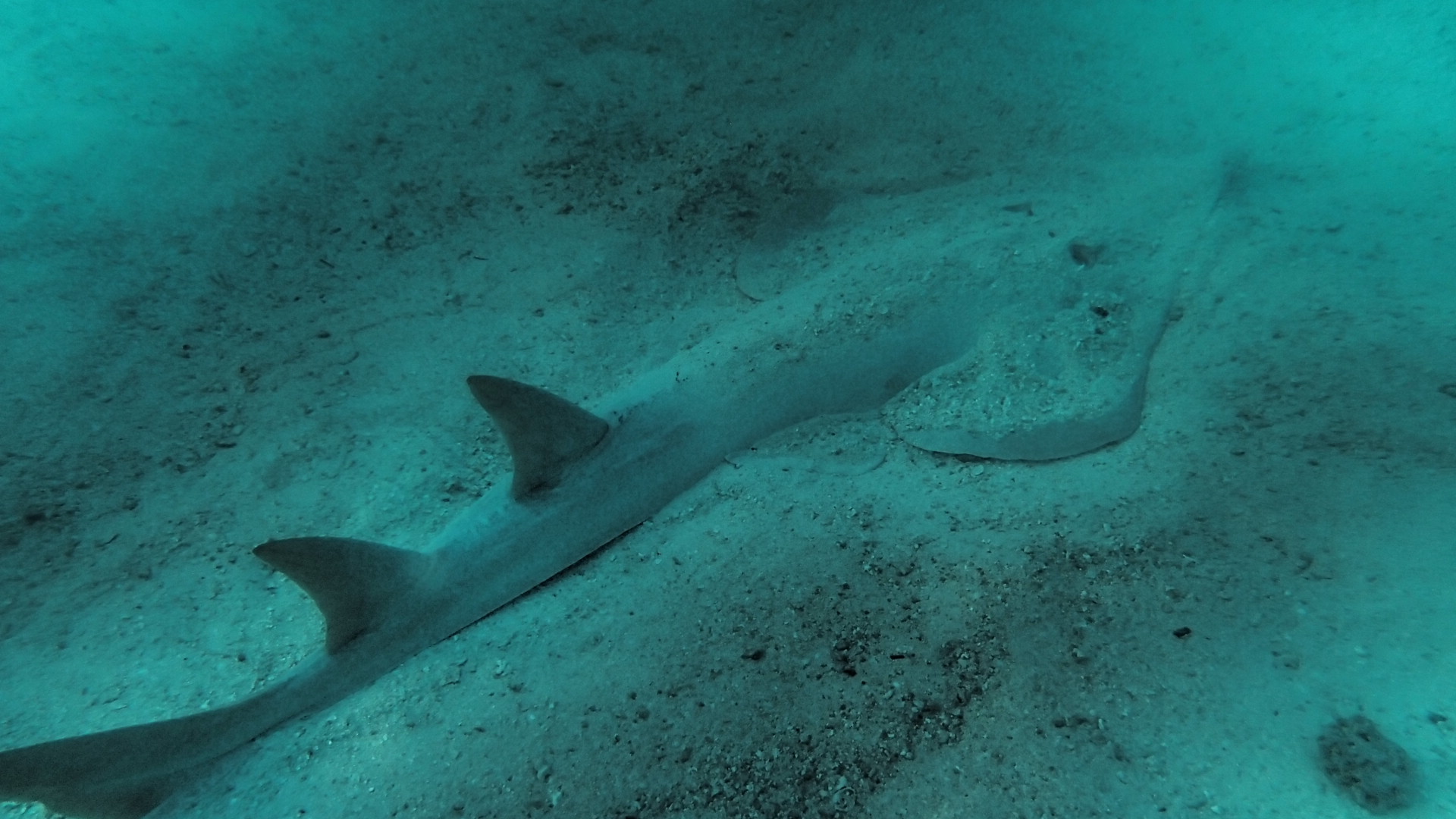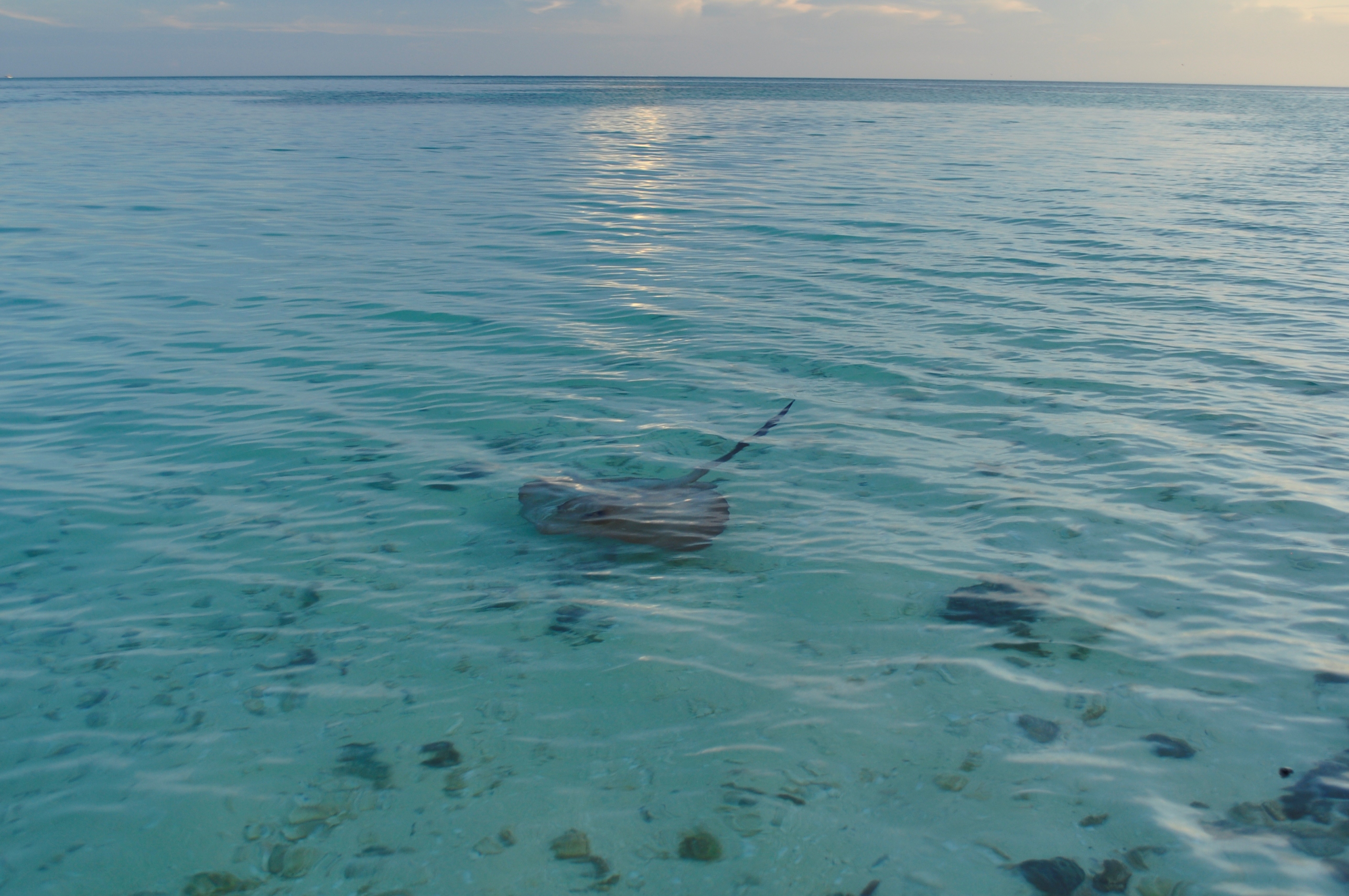Stingrays on screen
I like to work at night. I like the dark. When it’s quiet and everyone else is in bed, there are fewer distractions and it is easier to focus and be creative. The dark is peaceful. A lot of these nocturnal work sessions involve a good set of headphones and backing soundtracks by a great music producer from the UK: Kalabi. This talented musician writes haunting electronic tracks that get me in the right frame of mind and help me to focus. So what has all this got to do with stingray tracking on coral reefs?

The batoids (rays and ray-like fishes) include some strange and wonderful species like this shovelnose ray Most people will never get to see one in the wild, which is why research videos can be so important in bringing these animals to people. © Photo by Andrew Chin
It’s no secret that the batoids are under appreciated, and many people just haven’t had the opportunity to see what these amazing animals look like and how they move. Here’s where the expedition to One Tree Island on the Great Barrier Reef comes in. It gave us some great footage of different rays, including some really interesting and unusual-looking animals like the wedgefish and the porcupine ray. The BRUVS captured images of these different and fascinating species and gave us glimpses into their behaviour in their natural environment. And YouTube videos are a great way to show these animals to people who probably won’t ever get a chance to see them in the wild.

Cow tail rays are one of the rays people are most likely to see However, few people will ever get to see their behaviour underwater, which is why BRUV TV can be so useful in showing people how these animals move and behave. © Photo by Andrew Chin
So late one night after the trip, I e-mailed Kalabi on a whim and asked if he’d like to collaborate with us by donating some tracks to make a YouTube music video that would show people these amazing animals. To be honest, I didn’t expect a reply, but to my immense surprise, he responded within 24 hours! He was really enthusiastic about the idea and said he’d love to have his music be part of our research, and that he’d always wanted to visit the Great Barrier Reef. He sent me a link to the full set of his collected works and gave us permission to use any track for science-music videos! So with Kalabi’s track ‘Ghost Ship’ in hand, we put together what is essentially a music video of our batoid research and posted it on YouTube. Kalabi even showed the video at one of his shows, getting these images out there to help ‘spread the batoid love’!
If you like what you see, please click ‘like’ and feel free to post the link on your social media networks to help spread appreciation for these animals.
Thanks, Kalabi, for getting involved with this project. For those of you who like electronic ambient-down tempo tracks, all his work is available on iTunes, so please consider supporting the artist who is supporting us!

Leave a Reply
You must be logged in to post a comment.